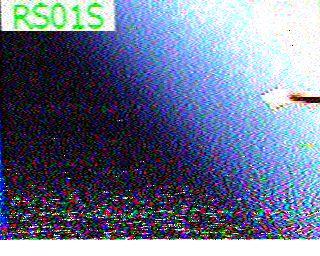Jeff, KE9V pointed at the following article via Twitter:
Are ‘ham’ operators going the way of 8-tracks and VCRs?
The author actually meanders a bit (into the why we call it “ham radio”, for some odd reason, but his main point seems to be this:
As National Public Radio found last March, amateur radio is an experience that can’t be duplicated surfing the Internet. That’s why when NPR attended a ham radio convention in St. Louis, a reporter found teens carrying on the hobby. As one 15-year-old said, Facebook and texting are fun, but it can’t match making friends with a $200 radio for which you don’t have to pay a monthly fee.
I groaned a bit inside, because this is complete balderdash.
Okay, it’s not complete balderdash. I am not one to tell teens (or anyone else) what is fun and what is not fun: they are capable of figuring that out for themselves. I’ve no doubt that the teens they interviewed at a ham radio convention thought ham radio was fun, otherwise, they probably wouldn’t have been there. But I also suspect that if you took away a teen’s mobile phone and replaced it with a $200 HT, you’d find that even those attending the conference would probably be more than a little upset.
The reason is obvious: a mobile phone and an HT aren’t interchangeable. They don’t do the same thing.
Most notably, an HT is a ham radio, and radios like that are almost exclusively for communicating with other hams. If you want to communicate with someone who isn’t a ham, a ham radio isn’t really all that valuable. At best, it requires a clumsy relay. In practice, it just isn’t done. You’d just fire up your phone and call them. Or text them. Or email them. Or Twitter. Or Facebook. Or post something to a blog. You’d send them a picture. Or a link to a YouTube video. If you really want to communicate with someone, I’d submit that the Internet provides a much richer environment than amateur radio.
Okay, but let’s say you do want to talk to hams. Isn’t ham radio the most obvious way to communicate with other hams?
Well, I’d submit the answer is mostly no. If your goal is to communicate, all of the ways that I mentioned above are still excellent, reliable, high bandwidth means of communication. Even if you toss in the requirement that the communication be free, the wide availability of WiFi in many areas (from coffee shops to libraries) makes conventional Internet a very attractive means of communication.
If you accept this, then it does seem that amateur radio is going to go the way of the Dodo.
But I don’t believe it will, because ham radio does provide some things that the conventional Internet doesn’t.
First of all, it relies somewhat less on infrastructure, so it provides a backup in times of emergency. This capability is widely trumpeted as the (primary?) virtue of amateur radio, and as justification for our spectrum allotment. Our pool of self-trained emergency communicators can provide some valuable assistance to local communities in case of emergency as a kind of failsafe.
Secondly, even in non-emergency cases, ham radio can provide some capabilities which would be difficult to reproduce using more conventional wired or wireless technology. Repeaters can provide broad coverage in areas not well served by cell towers. HT’s and small HF rigs can enable people hiking and camping in remote areas to communicate.
But primarily, ham radio is a kind of sport: an active pastime. A form of recreation. We do it because we like to do it. It provides us an interesting opportunity to achieve mastery. Mastery makes us feel better. The activity provides a means to connect with other humans and relate to them about our shared interests.
The invention of the motorboat didn’t end surfing or swimming. The invention of canned tuna fish didn’t end fishing. The invention of cars didn’t end walking or running. Depending on the emergency, skills like walking, fishing or swimming may save your life, but that’s still not why people do them: they do them because it’s fun.
As long as ham radio continues to be fun, ham radio will continue.


